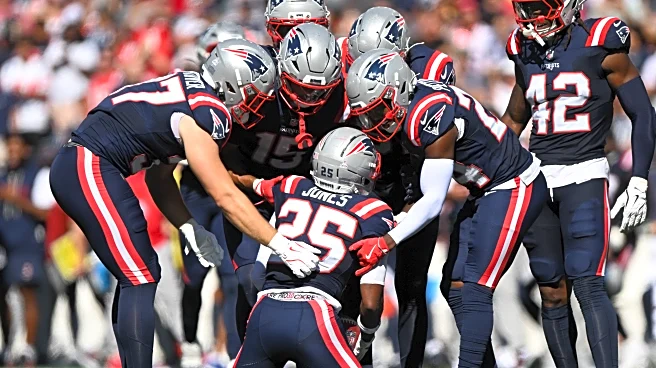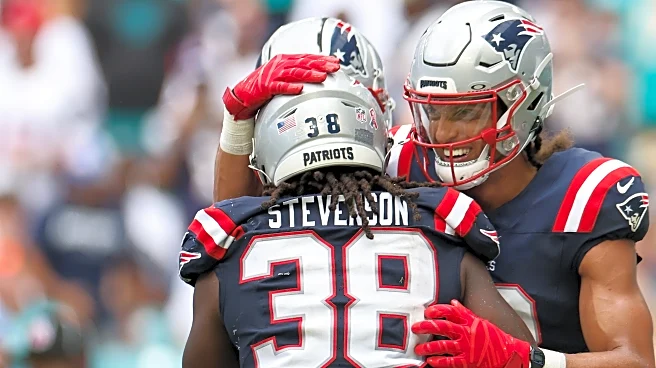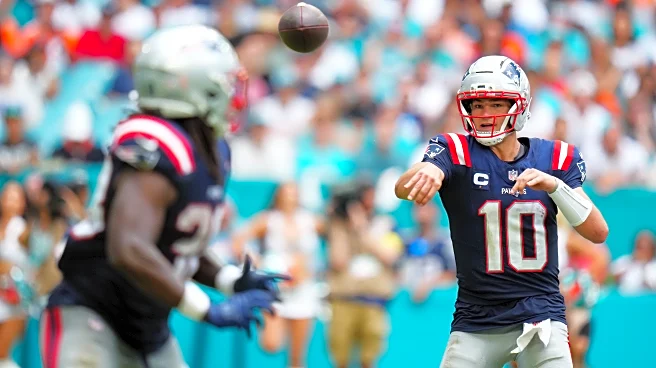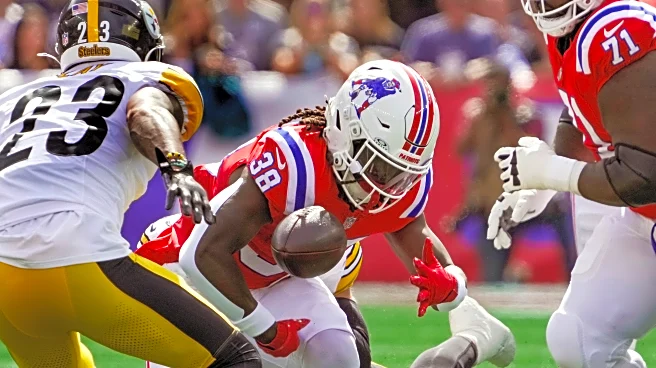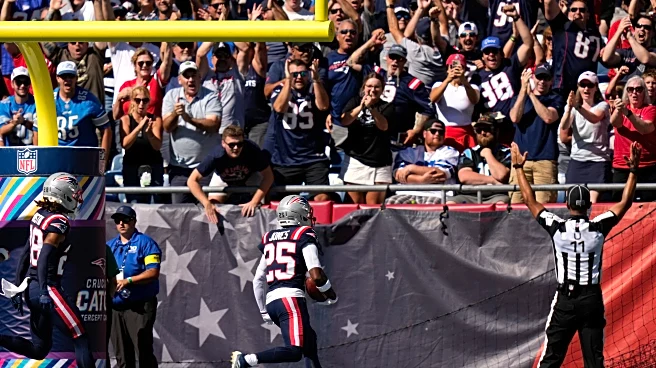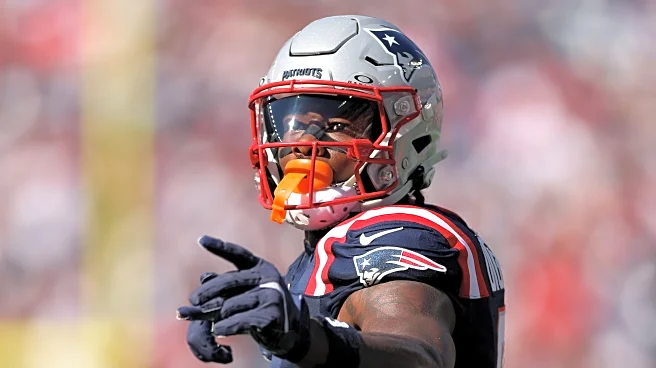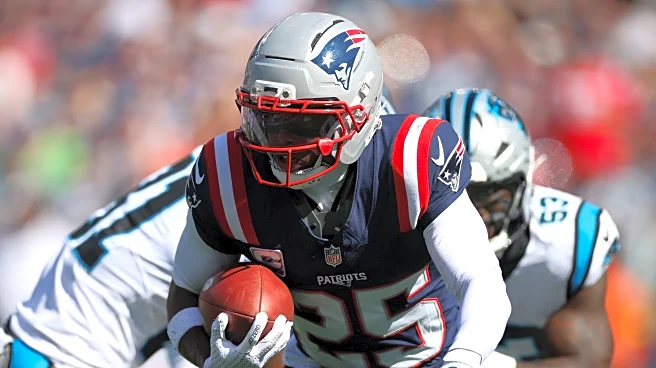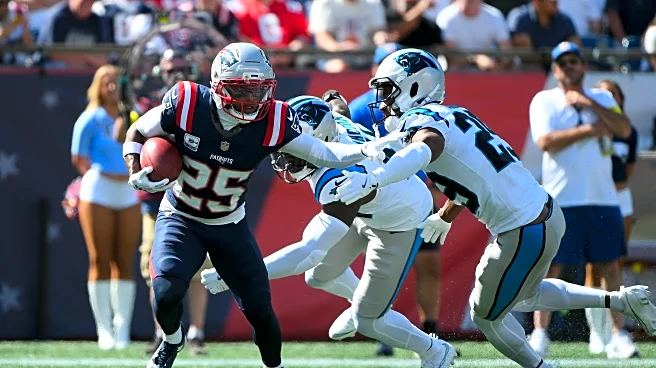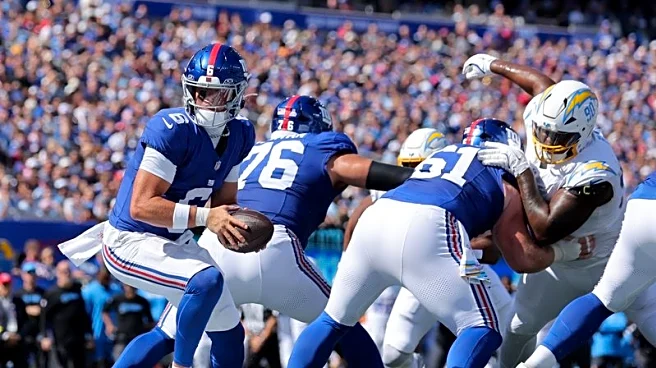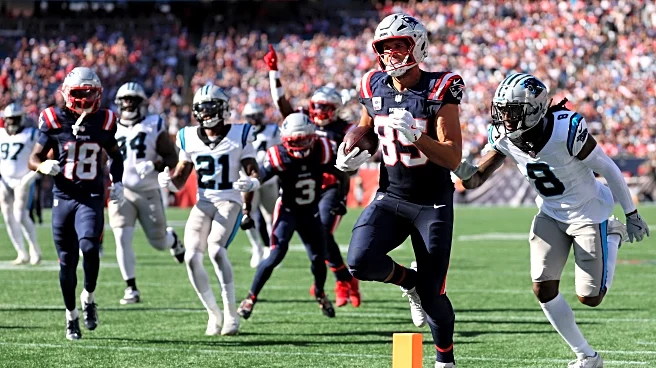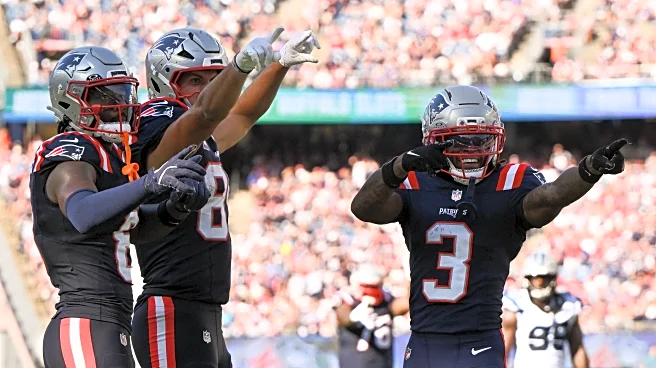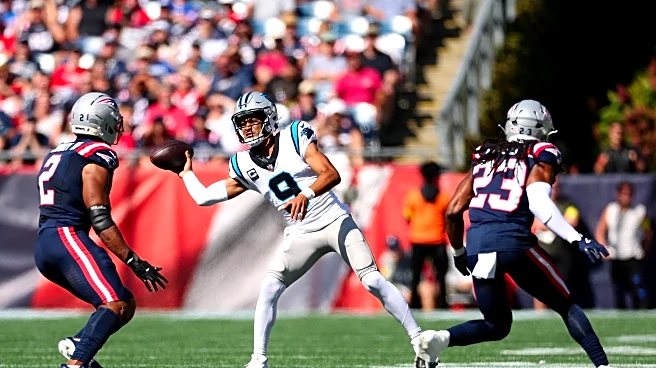Ahead of this year’s training camp, New England Patriots head coach Mike Vrabel explained that he was looking at his team’s performances in three categories. There is the good, the bad, and, as he called it, the s—t that gets you beat.
Against the Carolina Panthers on Sunday, there was a lot more good than bad. Otherwise, Vrabel’s team would not have been able to win 42-13 in convincing fashion. Still, if the coach wants to look at the Patriots like that, who are we to disagree? So, let’s break down
the Week 4 game in exactly that manner.
The good: Complementary football
It all started on defense. Even though Carolina had advanced all the way to the Patriots sided of the field for a second straight possession to open Sunday’s game, two incomplete Bryce Young passes and a short run on 3rd-and-10 forced the series to stall and the Panthers to bring on their punting team. Up 6-0, the ball was set to go back to a New England offense that had gone three-and-out in its lone possession so far.
Marcus Jones, however, had other plans. The former All-Pro fielded the punt, evaded a pair of tackle attempts, and 87 yards later had put the Patriots on the board.
It was the spark that ignited a blowout.
The Patriots forced another punt on Carolina’s ensuing drive (a kick that was sent to the end zone for a net gain of only 21 yards), then proceeded to drive 80 yards in six plays to take a 14-6 lead on a Drake Maye scramble. From that point on, New England was in full control.
There were several reasons why that was the case, but it all started with and was extended by the Patriots’ ability to play complementary football. The offense was moving, the defense was stout, and special teams kept delivering field swings.
“When we don’t beat ourselves and we take care of the football and we play complementary football and we get stops on third down, the return, the special teams are a factor, and we score touchdowns in the red zone, it can look like something,” said Mike Vrabel after the game. “That’s not guaranteed every week, but certainly we can see the difference in how critical those phases are and putting them all together.”
The bad: Penalties
Four weeks into the season, the Patriots have been penalized a total of 39 times (9th) at a rate of once every 14.8 plays (7th). If we remove offsetting or declined flags, they stand at 35 (t-3rd) and 16.5 (3rd).
Against the Panthers, they added eight flags to their tally, including seven accepted penalties resulting in a loss of 54 yards. While none of them were back-breakers, they continue to be a problem for a team whose margin of error — despite Sunday’s final score — is not particularly high.
Among the players flagged, two stand out. Edge K’Lavon Chaisson was penalized for the fifth time this year when he false-started on the Patriots’ first punt of the day; he has now been reprimanded for three offsides, one holding, and one false start. Running back TreVeyon Henderson, meanwhile, received flag No. 4 of his young career when he committed a hold in pass protection in the early third quarter to turn a third down conversion into a third-and-long.
The s—t that gets you beat: Another slow start
Against the Panthers, it ultimately did not turn out to be a problem. However, before they sent that fateful punt to Marcus Jones, the visitors had been the superior team: they were up 6-0 and controlled the flow of the game thanks to their offense gaining 110 yards and eight first downs on two possessions, and their defense forcing a three-and-out versus Drake Maye and company.
There is no point in playing the woulda/coulda/shoulda game — What if Jones had called for a fair catch? — but the fact remains that the Patriots cannot trust other opponents to fold like Carolina did on Sunday, both on special teams and as a whole. Against a team like Buffalo next Sunday night, falling behind and not showing much early resistance on defense and not making the necessary plays on offense is a recipe for disaster.
